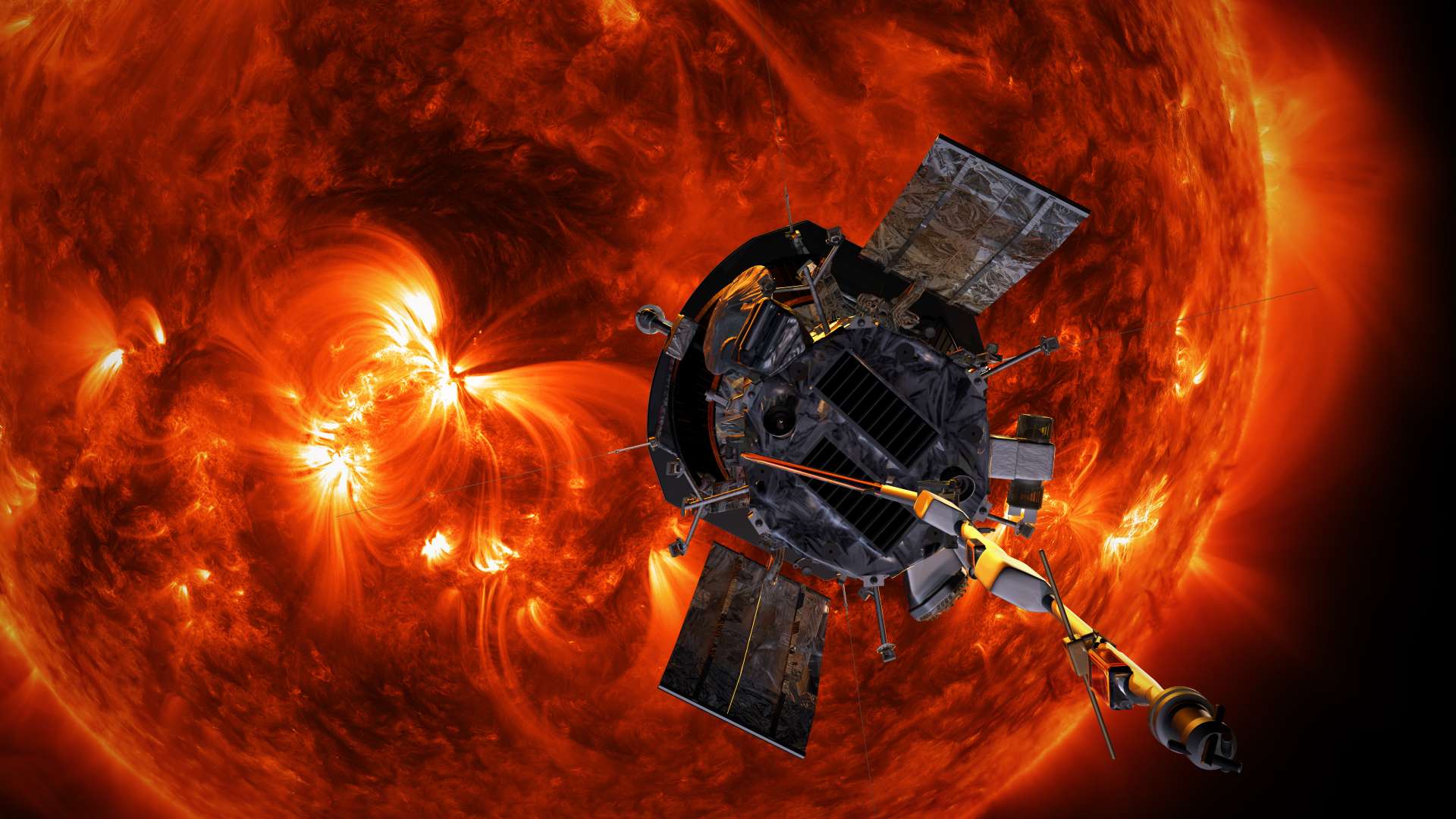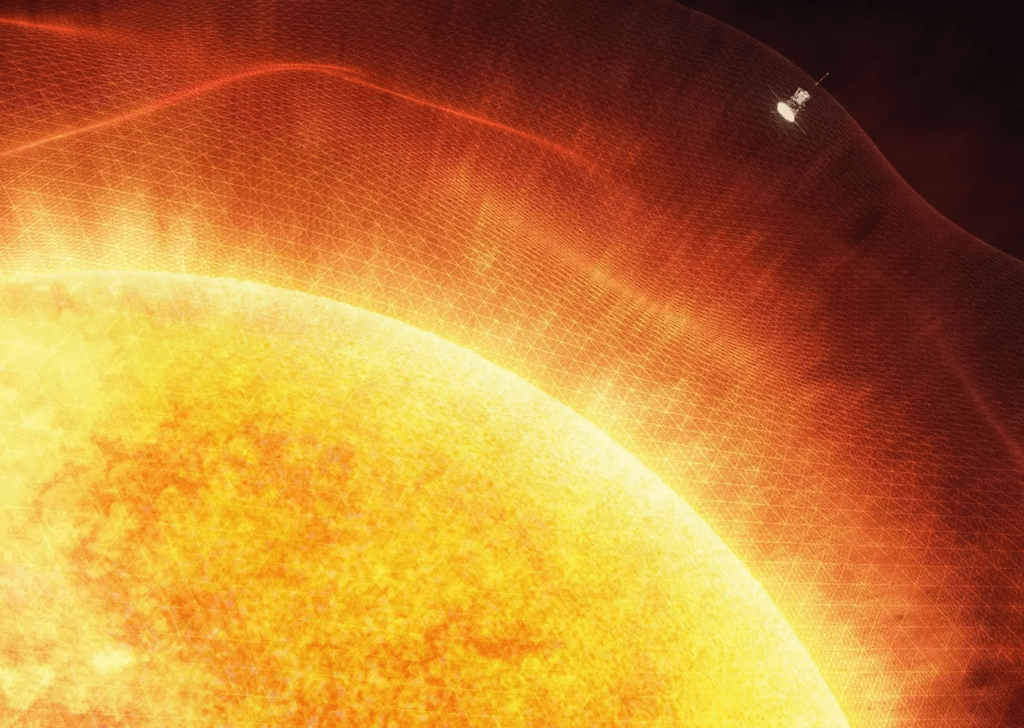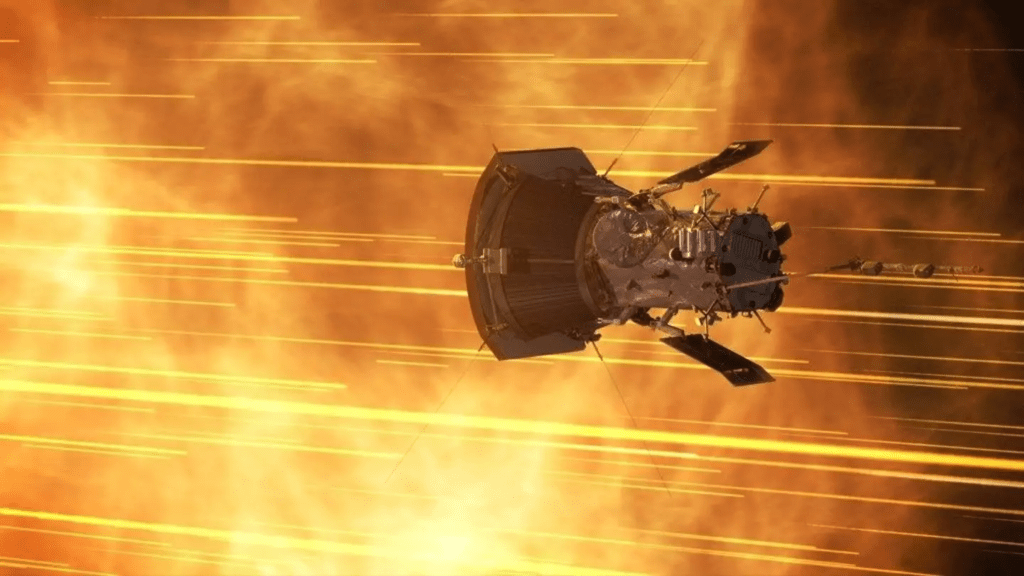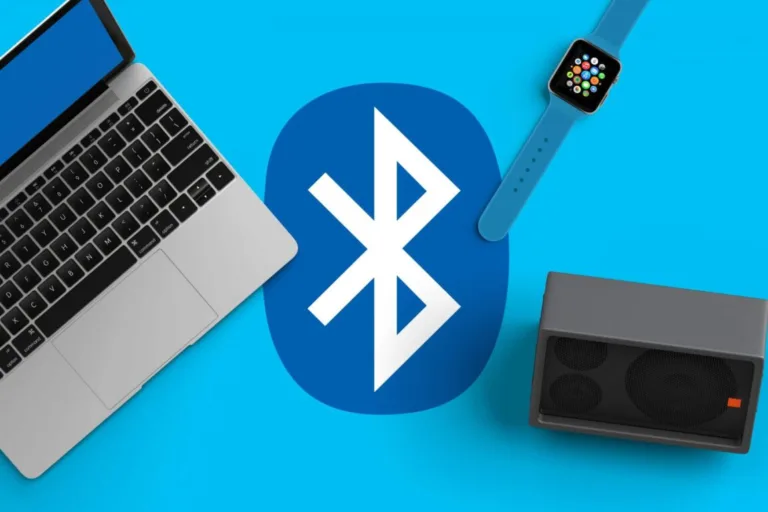NASA Probe ‘Touches the Sun’ and Captures Chilling Solar Winds: The Sound That Shocked the Internet

Introduction
In a ground-breaking moment for humanity, NASA’s Parker Solar Probe has accomplished what no human-made object has done before: it “touched the Sun.” This historic feat not only enabled scientists to gather ground-breaking data about the Sun’s outer corona but also recorded a sound that has left people across the globe both awestruck and fearful.
The “creepiest noise ever heard,” as described by many, has taken the internet by storm, inspiring countless discussions and speculations. From Reddit to TikTok, users are captivated by this eerie and almost otherworldly phenomenon. In this article, we’ll explore the significance of this achievement, the science behind the mysterious sound, and why it’s a crucial step forward for space exploration and life on Earth.
What Does It Mean to ‘Touch the Sun’?
When NASA announced that the Parker Solar Probe had “touched the Sun,” it marked a monumental leap in space exploration. This historic milestone refers to the spacecraft flying through the Sun’s outermost layer, known as the corona. By crossing this boundary, the probe entered a region never before reached by human technology.

The Sun’s surface is incredibly hot, with temperatures reaching about 5,600 degrees Celsius (10,000°F). However, the corona—where the probe ventured—can be millions of degrees hotter. This anomaly is one of the key mysteries the Parker Solar Probe aims to solve. The probe’s cutting-edge heat shield, made of advanced carbon foam, ensures it can withstand extreme temperatures of up to 1,425 degrees Celsius (2,600°F).
Traveling at an astonishing speed of 430,000 miles per hour, the Parker Solar Probe is also the fastest human-made object ever. This speed allows it to conduct rapid flybys of the Sun, gathering critical data without lingering too long in the intense heat and radiation.
Nicky Fox, head of NASA’s Science Mission Directorate, emphasized the mission’s importance:
“Flying this close to the Sun is a historic moment in humanity’s first mission to a star. By studying the Sun up close, we can better understand its impacts on the solar system and gain insights into stars across the universe.”
This mission is pivotal not only for understanding the Sun’s behavior but also for improving our ability to predict solar storms that could disrupt technology and communications on Earth. It may also aid in the search for habitable planets by offering clues about how stars influence their surrounding environments.
The Chilling Sound of Solar Winds
As the Parker Solar Probe flew through the corona, it recorded the sound of solar winds, a phenomenon that has both fascinated and unsettled listeners. These winds are streams of charged particles that continuously flow outward from the Sun, shaping the space weather that impacts our solar system.
During its close approach, the probe captured what has been described as a high-pitched, almost otherworldly screech. This sound, which has been likened to a scream, has sparked widespread reactions online. Many social media users expressed their amazement and fear, comparing it to the imagined sounds of science fiction or even hellish landscapes.
One Reddit user commented:
“It’s eerie to think that this sound is coming from the Sun. It gives me chills just listening to it.”
Another user on Instagram wrote:
“This is what I imagine the universe would sound like—mysterious and terrifying.”
What Causes the Sound?
Despite the unsettling nature of the recording, it’s important to understand the science behind it. The sound isn’t a literal noise but rather a sonification of data. Since there’s no air in space to carry sound waves, the probe recorded the electromagnetic waves generated by solar winds. These waves were then converted into audible sound for human interpretation.
This eerie “music” of the Sun offers scientists a unique way to study the dynamics of solar wind and its interactions with magnetic fields. It’s a fascinating reminder of the Sun’s immense power and the mysteries it still holds.
Listen to the sound yourself:
Hear the Parker Solar Probe’s eerie recording
Social Media Reacts to the Sound
The Parker Solar Probe’s chilling discovery has ignited a flurry of reactions across social media platforms, with users expressing awe, curiosity, and even fear. From TikTok to Reddit, the sound has become a viral sensation, sparking conversations about space exploration and humanity’s place in the universe.
TikTok: Viral Videos and Eerie Vibes
On TikTok, the hashtag #ParkerSolarProbe has garnered millions of views. Creators have paired the audio with visuals of fiery solar flares, CGI depictions of the Sun, and creative interpretations of what the sound represents. Many videos focus on the chilling and surreal nature of the recording, prompting users to share their thoughts in the comments.
One TikTok user posted:
“This sound gives me goosebumps. It’s like the Sun is screaming into the void.”
Instagram: Stunning Visuals Paired with Sound
On Instagram, posts under the hashtag #NASA showcase the audio clip alongside CGI visuals of the probe flying through the corona. These posts have sparked widespread engagement, with users sharing their amazement and curiosity about the Sun’s power.
One popular post reads:
“Hearing this sound is both beautiful and terrifying. It’s a reminder of how small we are in the vastness of space.”
Reddit: In-Depth Discussions on r/Space
Reddit’s r/space community has become a hub for deeper discussions about the mission. Users are dissecting the science behind the sound and debating its implications for our understanding of space weather.
One user remarked:
“The fact that we can record and interpret this data is a testament to human ingenuity. It’s amazing what we’re capable of.”
Why the Mission Matters
Beyond its viral fame, the Parker Solar Probe’s mission has profound implications for science and humanity. By studying the Sun’s corona up close, the probe is helping scientists answer some of the most pressing questions about our star.
- Why is the corona hotter than the Sun’s surface? This paradox, known as the coronal heating problem, is one of the biggest mysteries in solar physics.
- What accelerates the solar wind? Understanding this process could improve our ability to predict space weather, which impacts satellites, power grids, and communications on Earth.
- How do solar flares and coronal mass ejections affect Earth? These powerful events can disrupt our technology and pose risks to astronauts in space.

By addressing these questions, the Parker Solar Probe is advancing our knowledge of the Sun and its influence on the solar system. This knowledge could have practical applications, such as improving the resilience of Earth’s technology against solar storms.
Looking Ahead: The Probe’s Future Flybys
The Parker Solar Probe’s journey is far from over. Its next planned close approaches to the Sun are scheduled for March 22, 2025, and June 19, 2025. During these flybys, the probe will venture even closer to the corona, providing scientists with more opportunities to gather groundbreaking data.
As the probe continues its mission, it will not only deepen our understanding of the Sun but also inspire future generations of scientists and explorers. Its discoveries could pave the way for new technologies and insights into the behavior of stars across the universe.
Conclusion
The Parker Solar Probe’s mission to “touch the Sun” is a testament to humanity’s ingenuity and determination. By venturing closer to our star than ever before, it has opened new doors for understanding the Sun’s mysteries and its impact on the solar system.
While the eerie sound of solar winds may give us chills, it also serves as a reminder of the vastness and beauty of the universe. As the probe continues its journey, who knows what other incredible discoveries await? One thing is certain: the Sun still has many secrets to reveal.
Featured Image Credit: NASA/Johns Hopkins APL/Steve Gribben






